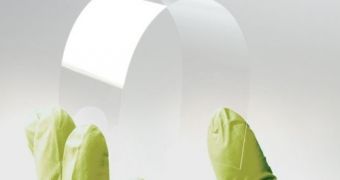We've seen our share of flexible/bendable/rollable technologies and products, but many are only in patent form, while the rest are far from embodying the actual dream of malleable gadgetry.
Corning, however, has moved us all a fair bit closer to that hypothetical age. The company, famous for its damage-resistant Gorilla Glass that many tablets and notebooks use as screen protection, has developed the Willow Glass.
With a thickness of 50 to 200 micrometers, it is produced and stored in rolls of up to 300 meters in length and 1 meter in width.
What's more, it was “created with the requirements of continuous high-temperature roll-to-roll processing techniques for the printing industry in mind.”
This allows it to be applied to solar devices, electronic paper, OLED lighting, large-scale sensors, display backplanes, color filters, etc.
Not only that, but despite the malleability, the glass is not fragile. Its endurance is superior to that of polymer in fact.
To be more specific, while there is no indication of high tolerance for hits, Willow Glass withstands temperatures as high as 450 degrees Celsius. Without this resistance, it would be impossible to create high-end displays.
We aren't sure what devices will use Willow Glass first. Knowing how much talk has been going around about flexible gadgets, we guess that it is feasible for rollable or foldable phones to appear eventually. Nevertheless, the width and length of the rolls suggest that we may see larger applications first.
Don't hold your breath though. While the idea for rollable TVs and the like is, indeed, feasible now, companies need to figure out how to make all the circuitry in a panel bend with the screen, which could take a while.
Check out the videos below for a look at how the glass is made, and for some words from the commercial program manager for Willow Glass. There's no “hands-on” demonstration in the footage, unfortunately.

 14 DAY TRIAL //
14 DAY TRIAL // 
